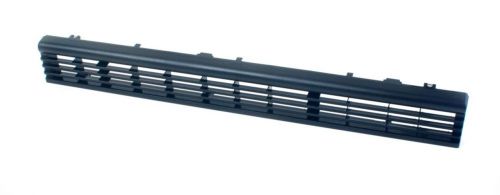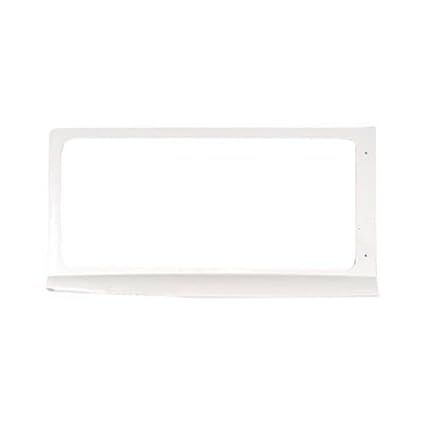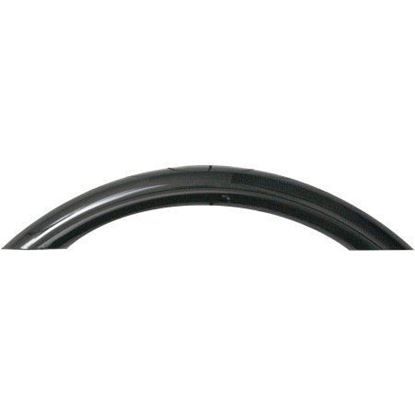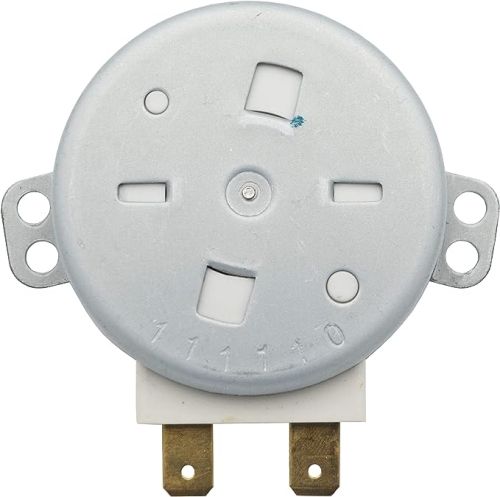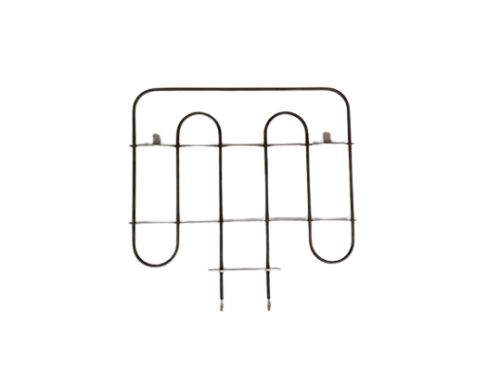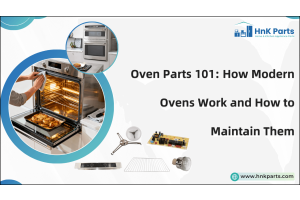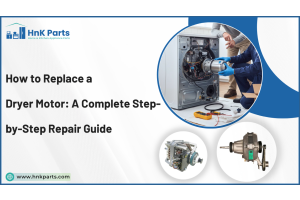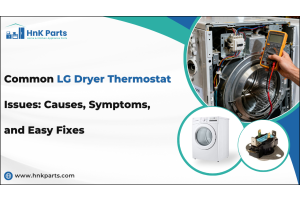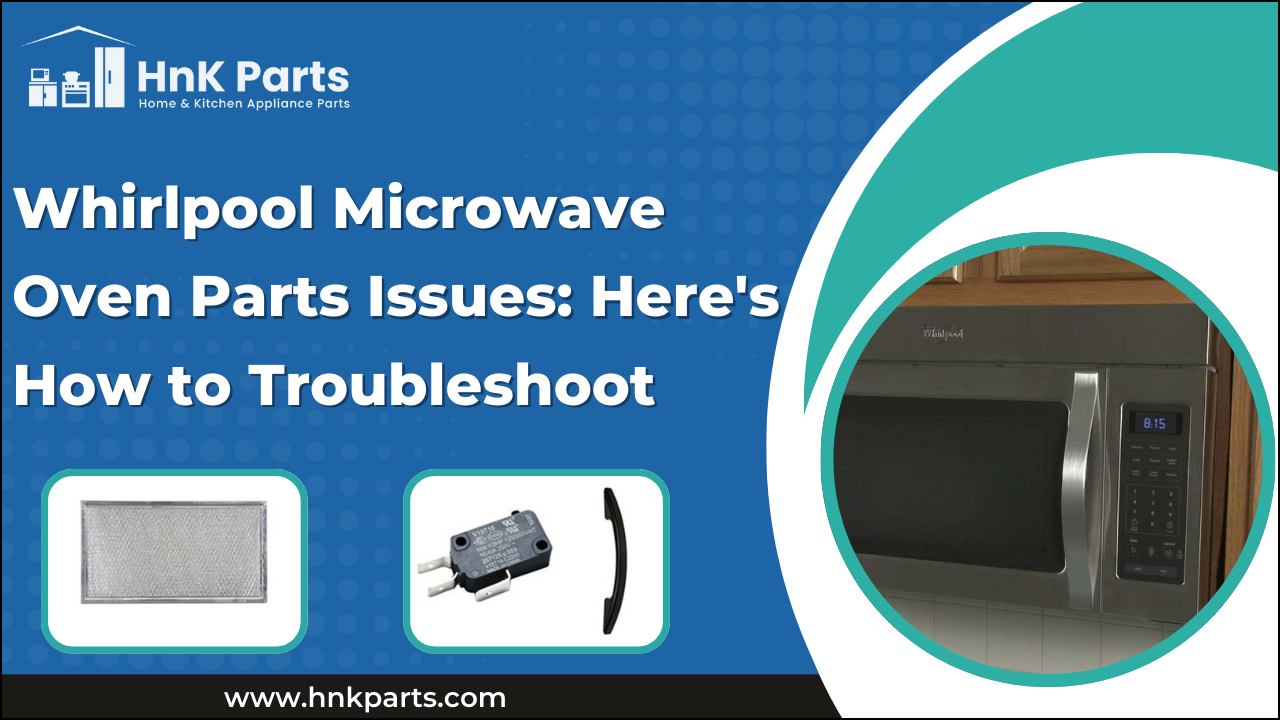
Whirlpool Microwave Oven Parts Issues: Here's How to Troubleshoot
Whirlpool microwaves are renowned for their reliability and efficiency, but like any household appliance, they can develop problems over time. Understanding the common issues associated with Whirlpool microwave oven parts is essential for effective troubleshooting. Knowing how to identify and resolve these issues can save you time, money, and stress. Microwaves have become an integral part of modern kitchens, serving various purposes from reheating leftovers to cooking meals. When a problem arises, it can be frustrating. This article will guide you through common issues, key components, step-by-step troubleshooting, and preventive maintenance tips to ensure your microwave performs optimally.
Why Troubleshooting Whirlpool Microwave Oven Parts Matters
Preventing minor issues from becoming major problems can save you money on costly repairs, and regular maintenance and troubleshooting of your Whirlpool microwave is the best way to achieve this. Neglected appliances tend to fail prematurely, and neglect can also pose significant dangers. Therefore, being proactive in this regard means that your appliance is more likely to operate safely and efficiently while lasting longer, thereby enhancing longevity and performance. Many people rely on their microwaves for daily tasks such as heating snacks or cooking meals quickly, making it imperative to address microwave parts issues as soon as possible.
Common Whirlpool Microwave Oven Parts Problems
The following are some of the most frequently encountered issues with Whirlpool microwaves:
Microwave not heating
One of the most common complaints is that the microwave isn't heating food.
Possible causes could include:
-
Power supply issues: Ensure the microwave is plugged in and the outlet is functional.
-
Control settings: Sometimes, incorrect settings can be the culprit.
-
Faulty components: This might include the magnetron, high-voltage diode, or capacitor.
Microwave not starting
Another frustrating issue is when the microwave does not start at all.
Potential reasons include:
-
Door switches: If the microwave door latch is malfunctioning, the microwave won't operate.
-
Control lock: If activated, it can prevent the microwave from starting.
-
Demo mode: Some models have a demo mode that disables operation.
Turntable not spinning
If the turntable is not spinning, it can lead to uneven cooking.
Potential problems involve
-
Motor malfunction: The drive motor may be defective.
-
Coupler issues: The component that connects the turntable to the motor might be damaged.
Sparking or arcing inside the microwave
Sparking can be alarming and is often a sign of a deeper problem.
Common causes include:
-
Metal objects inside: Metallic cookware can create sparks.
-
Damaged waveguide cover: A compromised cover may cause arcing.
-
Faulty stirrer: This component helps distribute microwaves evenly.
How to Ensure the Smooth Operation of Your Household Appliances
Troubleshooting Key Whirlpool Microwave Oven Parts
Understanding the critical components of a Whirlpool microwave can facilitate effective diagnostics and timely repairs. Here’s a breakdown of essential parts and how to troubleshoot them effectively:
1. Magnetron
The magnetron is the core component responsible for generating microwave energy.
Signs of failure include:
-
A loud humming sound with the Microwave not heating
-
Complete unresponsiveness, even though the power is on
-
Magnetron failure can sometimes occur with unusual noises, which may indicate internal arcing or component wear.
How to troubleshoot:
-
Disconnect the power and remove the microwave casing
-
Test the magnetron for continuity with a multimeter.
-
If there's no continuity or visible damage (burn marks or bulging), replace it
-
Listen for unusual noises, which may indicate internal damage
2. High-Voltage diode and capacitor
These parts help convert electricity to the high voltage needed by the magnetron.
Symptoms of failure:
-
Microwave Not Heating properly or at all
-
Fluctuating heat or erratic cooking times
-
A faulty capacitor may also cause Unusual Noises, often resembling a buzzing or clicking sound.
How to troubleshoot:
-
Always discharge the capacitor before testing (it can hold a dangerous charge)
-
Test the diode's resistance in one direction using an ohmmeter.
-
A faulty capacitor may emit Unusual Noises like buzzing
-
Replace any parts that show no continuity or leakage
3. Door switches
Door switches are critical safety mechanisms in a Whirlpool microwave, preventing it from operating when the door is open.
Common issues include:
-
The door is not closing properly, leading to the microwave not starting
-
Misaligned or worn-out switches
-
A faulty Microwave door latch or Microwave door hinge is causing inconsistent switch contact
-
Test continuity with a multimeter and replace switches if found defective.
How to troubleshoot:
-
Open the control panel and locate the door switches
-
Use a multimeter to test each switch for continuity
-
Inspect the Microwave door latch and the Microwave door hinge for misalignment or wear
-
Replace any switch that does not respond or clicks inconsistently
4. Control board
The microwave control panel serves as the command center of the appliance.
Signs of control board issues:
-
The microwave control panel is unresponsive
-
Erratic functions, timer glitches, or incorrect power levels
-
Spontaneous start/stop issues that often mimic Motor malfunction
-
Resetting or replacing the Whirlpool microwave control board may restore normal operation.
How to troubleshoot:
-
Reset the microwave by unplugging it for 5 minutes
-
Inspect the control board for burnt components or visible damage
-
Use a multimeter to test the input/output voltage
-
If the Whirlpool microwave behaves erratically, replace the board
5. Grease filter
Located beneath the unit, this filter traps grease from stovetop cooking.
Maintenance tips:
-
Clean monthly with warm, soapy water
-
Replace when clogged or damaged
-
Failure to clean can restrict airflow, which may cause overheating or Unusual Noises due to fan strain.
How to troubleshoot:
-
Remove the filter and check for heavy grease accumulation
-
Wash it with warm soapy water or replace it if damaged
-
Clean monthly to avoid clogging that can lead to fan Motor malfunction
6. Oven door handle
The Whirlpool microwave door can be used safely by utilizing the handle.
Replacement process:
-
Remove the inner panel
-
Secure the new handle to the existing hole.
-
Door Not Closing Properly often occurs with Damage to the handle, which may stress the Microwave door latch or Microwave door hinge.
How to troubleshoot:
-
Remove the inner door panel by unscrewing it from the microwave door.
-
Look for any damage or broken plastic in the mounting area.
-
Replace the handle and make sure the Microwave door latch will engage properly.
7. Drive motor
The turntable is powered by the drive motor for even cooking.
Issues to look for:
-
Turntable not rotating
-
Clicking or grinding sounds indicate that there may be a malfunction in the Motor.
-
Nothing is being heated in the microwave, or just cold spots getting heated up
-
Unusual noises can also be caused by a faulty drive motor during operation.
How to troubleshoot:
-
Check the continuity of the drive motor
-
Mechanical obstructions around the turntable should be checked.
-
Replace the motor if it is getting power but not rotating.
-
Check that the motor shaft is aligned and not jammed.
Maintenance Tips for Whirlpool Microwave Oven Parts
Optimal functioning of your Whirlpool microwave depends on preventive maintenance. Effective Microwave Maintenance with regards to maintaining your unit properly is discussed here:
|
Microwave maintenance |
Description |
|
Regular cleaning |
|
|
Avoiding metal objects inside |
|
|
Periodic inspection |
|
|
Listening for unusual noises |
|
Keeping up with Microwave Maintenance and keeping an eye on your Whirlpool microwave for Unusual Noises will keep your microwave running smoothly. Over time, replacing worn Whirlpool microwave oven parts as needed will help keep it safe and performing.
How to Reset Whirlpool Microwave Oven: Step-by-Step Guide
Any homeowner needs to understand the common issues with Whirlpool microwave oven parts and how to troubleshoot them. Regularly maintaining and dealing with any problems that appear with your microwave will extend the life of your appliance and guarantee that it works properly and safely.
If your issues persist, it is advisable to seek professional help to perform more difficult repairs. Remember, early intervention can save you time and expense in the long run. HnKParts is a trusted online store for top-quality home appliance parts. Explore a wide selection of microwave parts from various leading brands and find exactly what you need.
FAQs
What is the life expectancy of a Whirlpool microwave?
The life expectancy of a Whirlpool microwave is typically 7 to 10 years with proper maintenance.
Is it worth replacing a magnetron in a microwave?
Replacing a magnetron in a microwave is worth it only if the unit is under warranty or the repair cost is low compared to a new microwave.
Is it worth it to repair a microwave?
Repairing a microwave is worth it if it's a minor issue and the unit is relatively new; otherwise, replacement may be more cost-effective.
How long are Whirlpool microwaves under warranty?
Whirlpool microwaves are under warranty for one year from the date of purchase, covering parts and labor.


